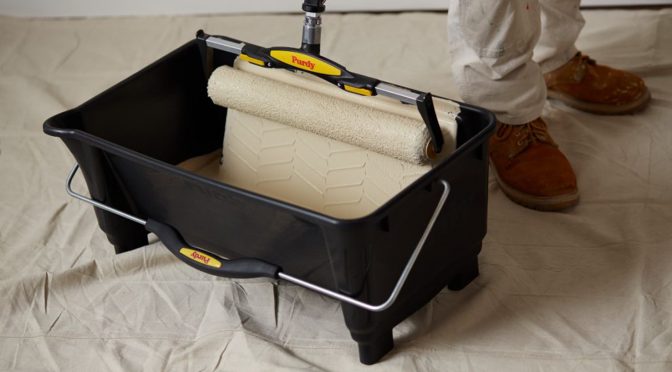Pros know that the quality of the coatings they use has a big effect on the final finish and durability of any paint job. In this article, we explore the qualities that distinguish the best interior and exterior paints and offer advice on how painting contractors can make the best decisions for their customers’ project and budget needs.
What does “quality” mean?
Here’s the bottom line: Better ingredients mean better performance. And that can translate to happier customers.
A high-quality coating starts with high-quality ingredients that allow paint to be applied more easily, look better and last longer. With that in mind, these are the four key ingredients that affect the quality of paint:
1. Pigment
There are two different types of pigment that can go into paint. First are “prime” pigments. These provide color and hide.
Second are low-cost “extender” pigments. By comparison, they add bulk to the product, but have little value as it relates to color.
Beyond aesthetics, pigments can provide desirable performance attributes. The type and quality of prime pigments used in the base paint will affect the coating’s performance in four areas: hide, durability, fading, and the gloss or sheen.
Higher-quality paints have more of the all-important, yet more expensive prime pigments – all the things that in the end give you easier application as well as better durability and color retention.
2. Binders
There are a variety of binders used in today’s paints. Latex paints may contain multiple types of acrylic binders. Oil paints typically contain linseed oil, soya oil, or modified oils called alkyds.
The type, quality and amount of binder affect everything from stain resistance and gloss to adhesion and crack resistance. Higher quality binders, found in higher quality paints, adhere to surfaces better and provide enhanced film integrity and longer lasting performance. This makes them more resistant to cracking, blistering and peeling.
3. Liquids
The liquid provides no added durability benefits. It’s simply the “carrier” that allows you to get the paint from the can to the surface.
As you might guess, top quality paints have a greater ratio of solids (pigment and binders) to liquids, while cheaper paints are more “watered down” with liquid.
4. Additives
Additives are ingredients that give a paint a specific benefit that it might not otherwise have.
Common additives in higher-end paints include:
- Rheology modifiers: provide better hide through flow and leveling of the coating
- Mildewcides: keep mildew in check
- Dispersing agents: keep pigment evenly distributed
- Preservatives: prevent spoilage
Additives do increase the cost of the product, but also provide significant added benefits.
What you get with better quality interior paints
Quality interior paints offer a wide range of advantages, from excellent aesthetics to easier application to better durability. And, when the paint job lasts longer, it’s more sustainable. Here are a few of the benefits you can expect from top-of-the-line interior coatings:
- No brush or roller marks for a more consistent appearance
- Better hiding, less retouching
- Minimal spattering so clean-up is simpler and faster
- Better resistance to dirt for less maintenance
- Better resistance to stains so paint stands up to repeated washings
- Better resistance to burnishing, for fewer “shiny” marks for rubbing and cleaning
Benefits of higher quality exterior paints
Quality exterior paints are formulated to provide a great look that lasts longer. They may adhere better and stand up to the elements more effectively. With a high-quality paint, you can expect:
- Better sheen and color retention, to keep the “new” look longer
- Better hiding for improved coverage and time and material savings
- Better dirt resistance, so the paint won’t pick up and hold airborne impurities
- Better resistance to chalking, to hold the finish longer
- Better mildew resistance
- Less blistering, flaking and peeling for long-lasting curb appeal
Fact: The cheapest paint isn’t necessarily the most inexpensive
All things being equal, paints that are lower in quality simply do not perform as well as their higher-priced competitors. And that’s something that can cost you more money down the road.
When you use better quality paints, you actually save in the long run. They can give you better coverage with fewer coats on virtually any substrate. Their attributes allow them to withstand more wear and tear than lower-quality coatings. And, with substantially longer life spans, your higher-quality paints require fewer recoats.
If you want to get the best looks and performance from your paint, quality comes first. Quality includes the time you take to prepare the surface, the paint you use and even the quality of applicators chosen. Sure, it may cost a little more up front but it can save you a lot of time, aggravation and money in the end.
How do you make sure that you are selecting the best quality paint for your jobs? Talk it over with your Sherwin-Williams sales rep or local store manager. With their expert, real-world knowledge of products and application, they will steer you to the best paint investment for your customer’s project and budget.
Download the free Sherwin-Williams Guide to Quality Paint Selection

